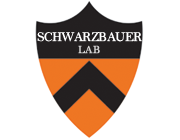Controlling the Surface Chemistry of a Hydrogel for Spatially Defined Cell Adhesion
Type
A two-step synthesis is described for activating the surface of a fully hydrated hydrogel that is of interest as a possible scaffold for neural regeneration devices. The first step exploits the water content of the hydrogel and the hydrophobicity of the reaction solvent to create a thin oxide layer on the hydrogel surface using a common titanium or zirconium alkoxide. This layer serves as a reactive interface that enables rapid transformation of the hydrophilic, cell-nonadhesive hydrogel into either a highly hydrophobic surface by reaction with an alkylphosphonic acid, or into a cell-adhesive one using a (α,ω-diphosphono)alkane. Physically imprinting a mask ("debossing") into the hydrogel, followed by a two-step surface modification with a phosphonate, allows for patterning its surface to create spatially defined, cell-adhesive regions.

